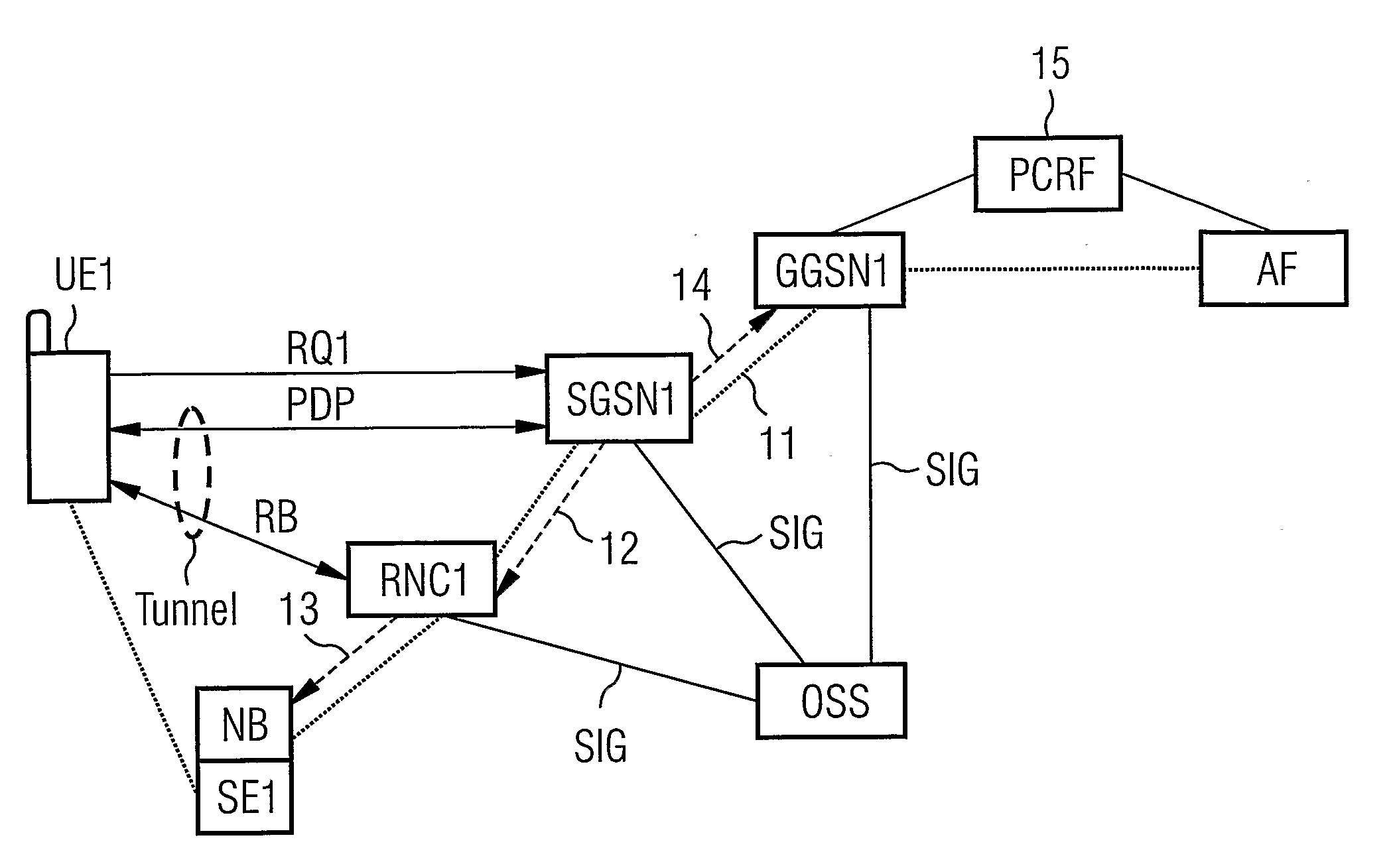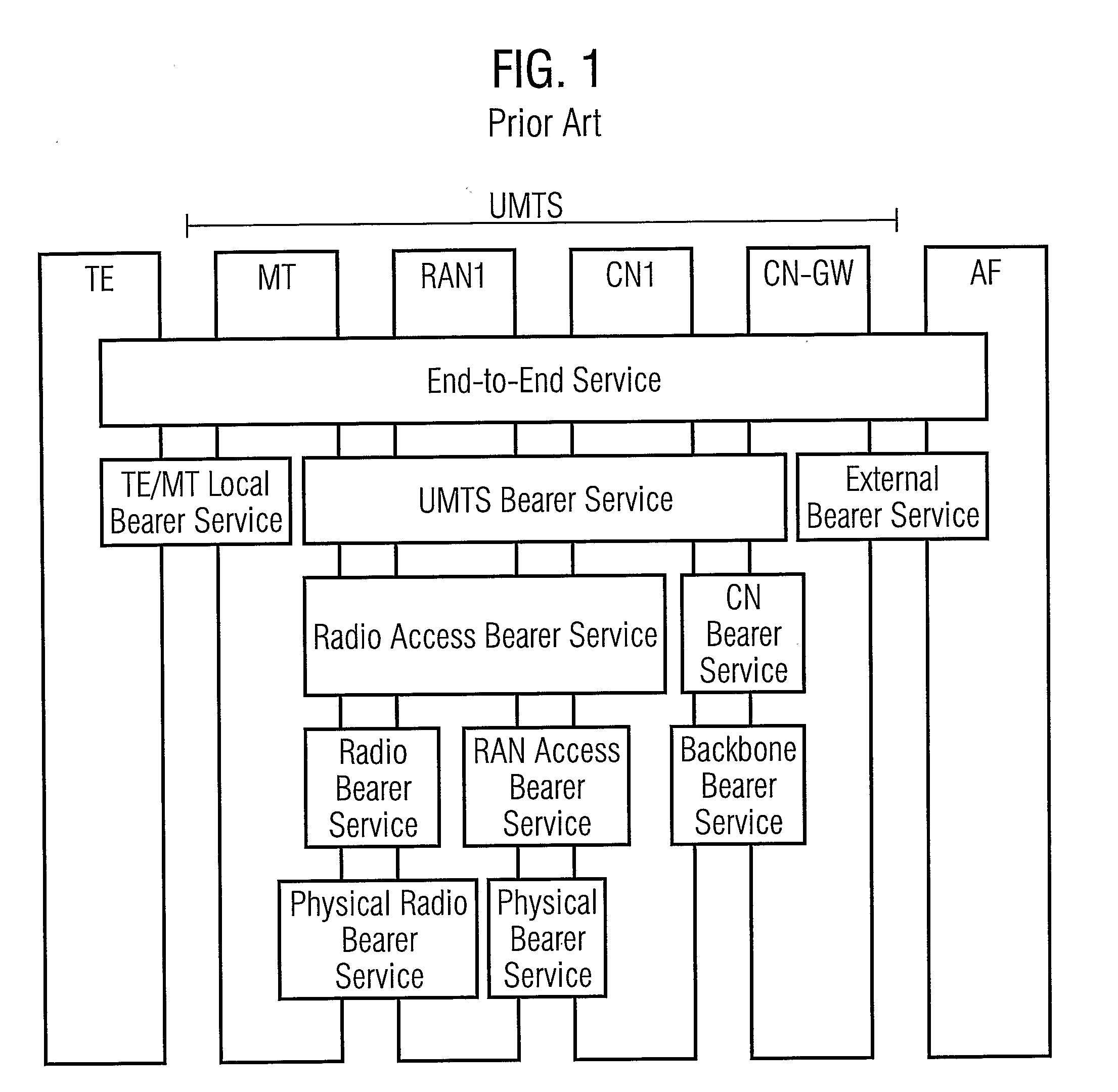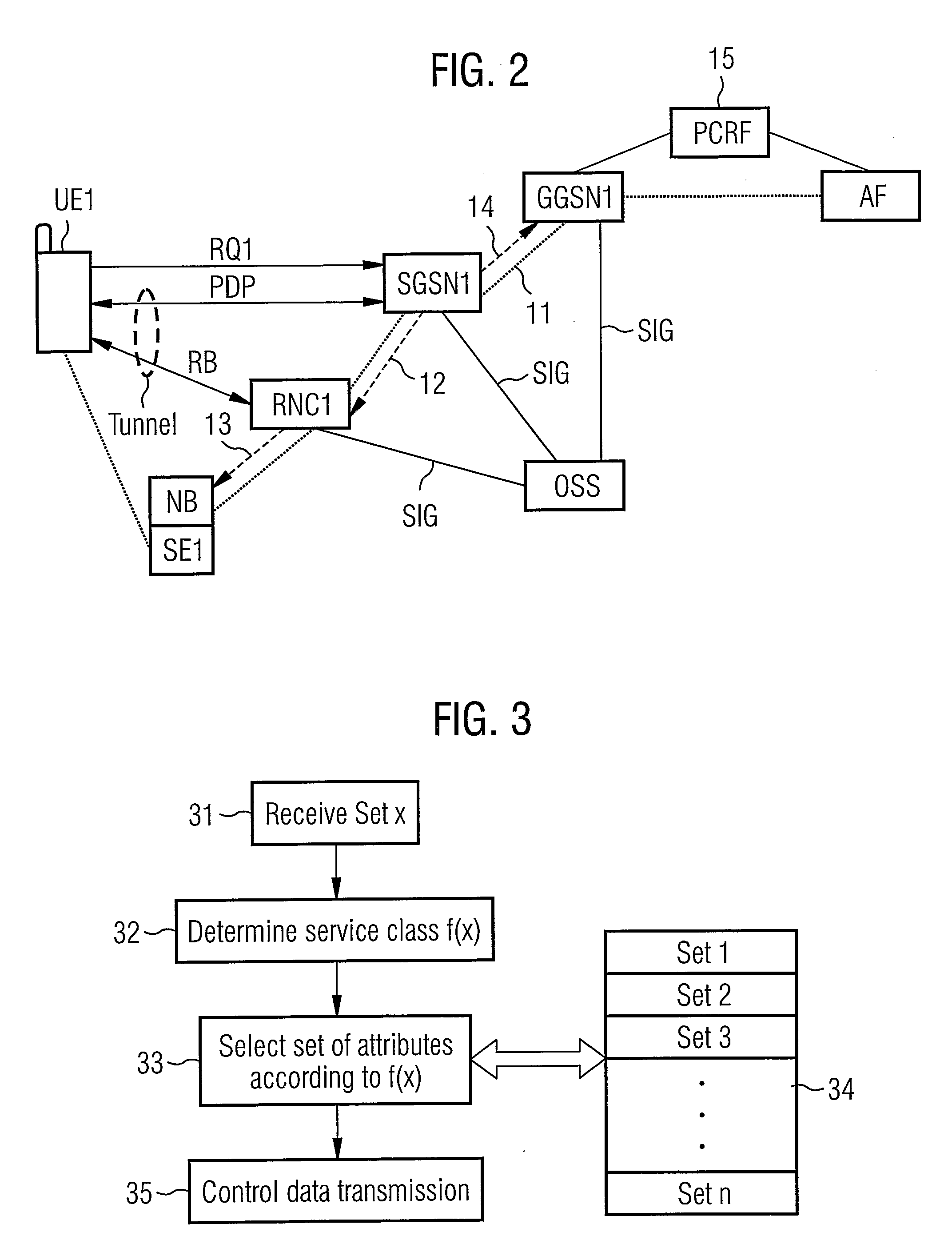Method and devices for specifying the quality of service in a transmission of data packets
a data packet and quality technology, applied in the field of methods and devices for specifying the quality of service in the transmission of data packets, can solve the problems of inability to forward quality of service information, inconvenient for users, and difficult for operators to specify the control of resources by nodes in the mobile network
- Summary
- Abstract
- Description
- Claims
- Application Information
AI Technical Summary
Benefits of technology
Problems solved by technology
Method used
Image
Examples
Embodiment Construction
[0035]FIG. 1 illustrates a quality of service concept in 3rd generation mobile systems as specified in technical specification 3GPP 23.107 V 6.3.0. of the 3rd Generation Partnership Project. Traffic comprising data packets is sent between a service entity (AF) and a user equipment comprising a terminal equipment (TE) and a mobile terminal (MT). The service entity may be a server which could be located in the operator's network or in an external network but it can be also another user equipment. The object of the concept is to provide a defined quality of service (QoS) on the application level using the bearer services of the underlying levels. Those bearer services are specified by contexts comprising attributes for defining the QoS of the respective bearer service. As the quality of the end-to-end service on the application layer depends on the specifications of the underlying levels, the contexts of the bearer services need to be specified with respect to the required end-to-end q...
PUM
 Login to View More
Login to View More Abstract
Description
Claims
Application Information
 Login to View More
Login to View More - R&D
- Intellectual Property
- Life Sciences
- Materials
- Tech Scout
- Unparalleled Data Quality
- Higher Quality Content
- 60% Fewer Hallucinations
Browse by: Latest US Patents, China's latest patents, Technical Efficacy Thesaurus, Application Domain, Technology Topic, Popular Technical Reports.
© 2025 PatSnap. All rights reserved.Legal|Privacy policy|Modern Slavery Act Transparency Statement|Sitemap|About US| Contact US: help@patsnap.com



